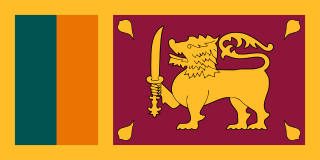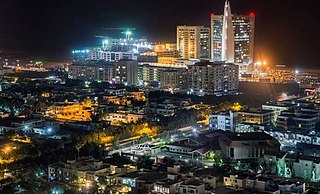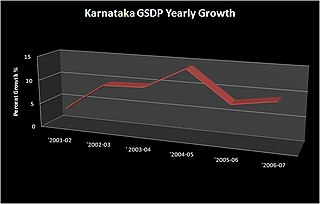India's telecommunication network is the second largest in the world by number of telephone users with 1.1724 billion subscribers as on 31 Dec 2019. It has one of the lowest call tariffs in the world enabled by mega telecom operators and hyper-competition among them. As on 31 Dec 2019, India has the world's second-largest Internet user-base with 661.94 million broadband internet subscribers in the country. As of 31 December 2018, India had a population of 130 crore people, 123 crore Aadhaar digital biometric identity cards, 121 crore mobile phones, 44.6 crore smartphones, 56 crore internet users up from 481 million people in December 2017, and 51 per cent growth in e-commerce.
The Indian media consists of several different types of communications of mass media: television, radio, cinema, newspapers, magazines, and Internet-based websites/portals. Indian media was active since the late 18th century. The print media started in India as early as 1780. Radio broadcasting began in 1927. Indian media is among the oldest in the world. It dates back even before the reign of Ashoka. Many of the media are controlled by large, for-profit corporations, which reap revenue from advertising, subscriptions, and sale of copyrighted material. India also has a strong music and film industry.
The television industry in India is very diverse and produces thousands of programs in many of India's official languages. More than half of all Indian households own a television. As of 2016, the country had over 857 channels of which 184 were pay channels.

The economy of India is characterised as a developing market economy. It is the world's sixth-largest economy by nominal GDP and the third-largest by purchasing power parity (PPP). According to the IMF, on a per capita income basis, India ranked 142nd by GDP (nominal) and 124th by GDP (PPP) in 2020. From independence in 1947 until 1991, successive governments promoted protectionist economic policies with extensive state intervention and regulation which is characterised as Dirigism. The end of the Cold War and an acute balance of payments crisis in 1991 led to the adoption of a broad program of economic liberalisation. Since the start of the 21st century, annual average GDP growth has been 6% to 7%, and from 2014 to 2018, India was the world's fastest growing major economy, surpassing China. Historically, India was the largest economy in the world for most of the two millennia from the 1st until 19th century.

Mass media of Sri Lanka consist of several different types of communications media: television, radio, newspapers, magazines, and Web sites. State and private media operators provide services in the main languages Sinhala, Tamil and English. The government owns two major TV stations, radio networks operated by the Sri Lanka Broadcasting Corporation (SLBC), and newspaper titles in Sinhala, Tamil, and English.
New Delhi Television Limited (NDTV) is an Indian television media company founded in 1988 by Radhika Roy, a journalist. NDTV started off as a content provider for Doordarshan, producing the show The World This Week in November 1988. In 1998 NDTV started its own 24×7 news channel with STAR and later shifted to its own venture in 2003, launching both the English and Hindi versions of the channel. NDTV's slogan is "Experience. Truth First".
The pharmaceutical industry in India was valued at US$33 billion in 2017 and generic drugs account for 20 per cent of global exports in terms of volume, making the country the largest provider of generic medicines globally. According to the Department of Pharmaceuticals, Ministry of Chemicals and Fertilizers, domestic pharmaceutical market turnover reached Rs 129,015 crore in 2018, growing 9.4 per cent year-on-year and exports revenue was US$17.28 billion in FY18 and US$19.14 billion in FY19.Hyderabad, Mumbai, Pune, Baddi, Himachal Pradesh, Chennai, Bangalore, Ahmedabad, Vadodara, Ankleshwar, Vapi, Sikkim and Kolkata are the major pharmaceutical hubs of India.

Karachi is the financial and industrial capital of Pakistan. As of 2019, Karachi had an estimated GDP (PPP) of $164 billion. The city accounts about half of the total collections of the Federal Board of Revenue, out of which, approximately half are customs duty and sales tax on imports. Karachi produces about 30 percent of value added in large-scale manufacturing, 25% of the GDP, the World Bank identified Karachi as the most business-friendly city in Pakistan. In 2010, research by the global human resources company Mercer found Karachi to be the most inexpensive city in the world.

NDTV 24x7 is a 24-hour English-language news and current affairs television channel based in New Delhi, India.

Karnataka is one of the highest economic growth states in India with an expected GSDP growth of 8.2% in the 2010-11 fiscal year. The total expected GSDP of Karnataka in 2010–2011 is about ₹2719.56 billion. Per capita GSDP during 2008–2009 was US$1034.9. Karnataka recorded the highest growth rates in terms of GDP and per capita GDP in the last decade compared to other states. In 2008–09, the tertiary sector contributed the most to GSDP, followed by the secondary sector, and the primary sector.
The article speaks about the many print, television and radio networks that dominate Chennai city's mass media market.
Mass media in Pakistan provides information on television, radio, cinema, newspapers, and magazines in Pakistan. Pakistan has a vibrant media landscape; among the most dynamic in South Asia and world. Majority of media in Pakistan is privately owned. Pakistan has around 300 privately owned daily newspapers. According to the Pakistan Bureau of Statistics, they had a combined daily sale of 6.1 million copies in 2009. Television is the main source of news and information for people in Pakistan's towns, cities and large areas of the countryside. Marketing research company Gallup Pakistan, estimated there were 86 million TV viewers in Pakistan in 2009.
Chinese publishing and printing industry have a long history. The first printed book discovered so far in the world was published in China during Tang Dynasty. With solid literatures and 5,000-year cultural accumulation, the Chinese publishing industry, however, fell behind western countries due to wars and political issues. The Chinese publishing industry continues to grow in modern times. In 2004, China published 25.77 billion copies of national-level and provincial-level newspapers, 2.69 billion magazines, and 6.44 billion books.
Jawhar Sircar is a former executive of Prasar Bharati.
India has an internet users base of about 475 million as of July 2019, about 40% of the population. This number is expected to be 627 million by the end of 2019. Despite being the second-largest user base in world, only behind China, the penetration of e-commerce is low compared to markets like the United States, or France, but is growing, adding around 6 million new entrants every month. The industry consensus is that growth is at an inflection point.
100 Crore Club is an unofficial designation by the Indian film trade and the media, related to Indian-language films that have net ₹100 crore or more in India after deducting the entertainment tax. By 2012, the ₹100 crore box office target had become "a new benchmark for a film to be declared a hit", and those affiliated with the 100 Crore Club were considered part of the "elite strata" within the Bollywood film community. It was succeeded by the 1000 Crore Club in 2017. Salman Khan (15) and Akshay Kumar (14) are currently the highest holders.
The printing industry in India is an important industry in that country.
The Indian electronics industry saw growth in the early years of the 21st century, encouraged both by government policies and incentives and by international investment. Its key and most resource-intensive segment, the semiconductor industry benefitted from domestic demand growing briskly. Semiconductors were required by a large number of industries, including telecommunications, information technology, industrial machinery and automation, medical electronics, automobile, engineering, power and solar photovoltaic, defense and aerospace, consumer electronics, and appliances. As of 2015, however, the skill gap in Indian industry threatened progress, with 65 to 70 per cent of the market relying on imports.
There are currently about 40 providers of over–the–top media services (OTT) in India, which distribute streaming media over the Internet. In fiscal year 2018, the OTT market in India was worth ₹2,150 crore, and its value grew to ₹35 billion in 2019.
The fast-moving consumer goods (FMCG) industry or consumer packaged goods (CPG) industry is mainly responsible for producing, distributing and marketing fast-moving consumer goods. The FMCG industry is the fourth largest sector in the Indian economy. Household and personal care products accounts for 50% of the sales in the industry, healthcare accounts for 31-32% and food and beverage accounts for remaining 18-19%.




